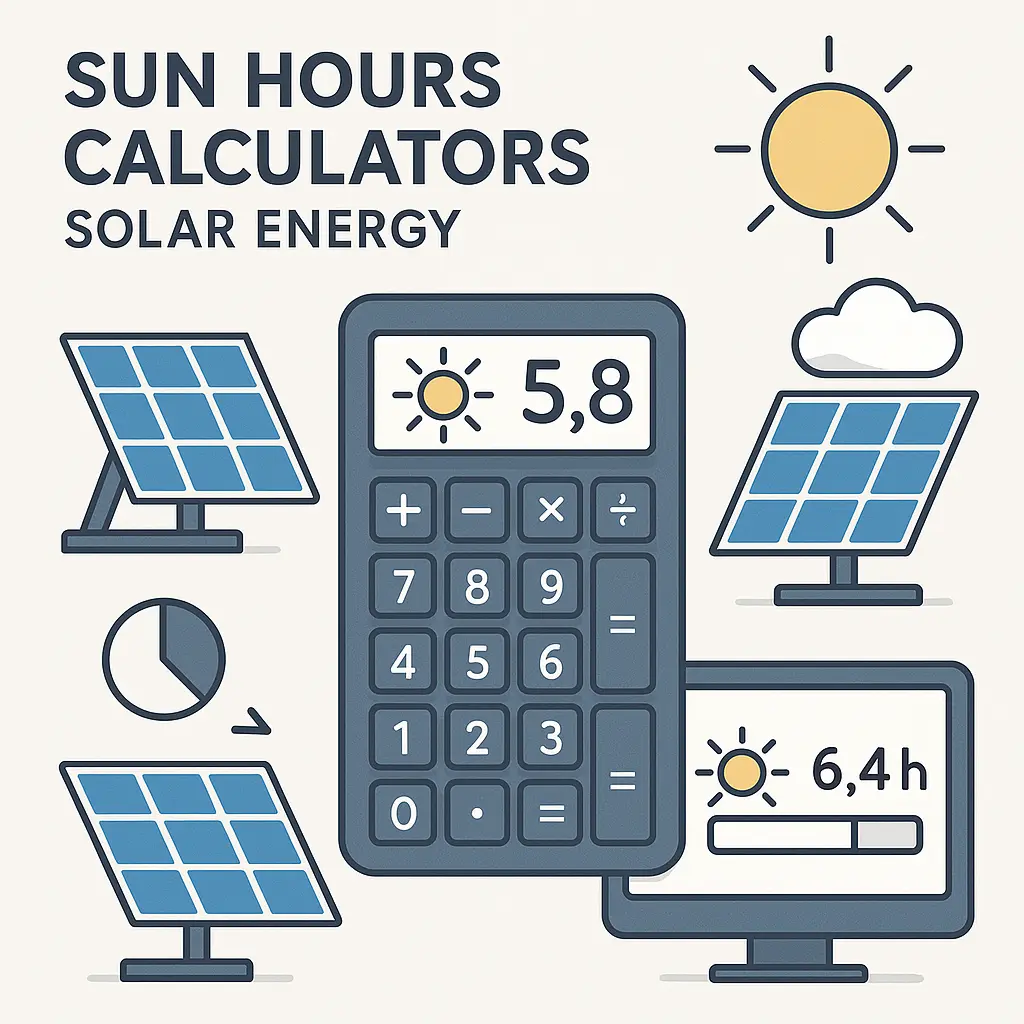Find Out How Much Solar Energy You Get Each Day
Discover your location’s solar energy potential with accurate peak sun hour calculations with our Sun Hours Calculator Tool
Enter Location
Location map will appear here
Solar Energy Potential
Peak Sun Hours
Daily Sunlight
Annual Potential
Monthly Average
Monthly Sunlight Variation

Understanding Peak Sun Hours
Peak sun hours measure solar intensity rather than just daylight duration. One peak sun hour equals one hour of sunlight at 1,000 watts per square meter, the standard measurement for solar energy calculations. This metric varies significantly by location and season.
Why Sun Hours Matter for Solar
Using our sun hours calculator ensures proper solar system sizing and realistic performance expectations. This tool helps determine exactly how many panels you need and accurately predicts your system’s energy output. Without these calculations from a reliable sun hours calculator, systems may be significantly under or oversized.
Calculating Your Solar Potential
Our calculator uses your location’s latitude, historical weather data, and terrain analysis to estimate peak sun hours. These calculations account for seasonal variations and local weather patterns to provide accurate annual averages.
What Are Peak Sun Hours?
Peak sun hours represent the equivalent number of hours per day when solar irradiance averages 1,000 watts per square meter. This standardized measurement helps calculate solar energy production regardless of location.
- Use a sun hours calculator to estimate sunlight.
- 1 peak sun hour = 1 hour of 1,000 W/m² sunlight
- Different from actual daylight hours
- Helps size systems with a sun hours calculator.
- Varies by season and location
- Essential for sizing solar systems Crucial for estimating solar panel efficiency and energy output
Why Sun Hours Matter
Understanding your location’s sun hours helps optimize solar energy systems:
- Accurately size solar panel systems
- Compare sites using a sun hours calculator
- Estimate energy production and ROI
- Determine battery storage requirements
- Compare locations for solar viability
- Plan storage with a sun hours calculator.
- Optimize panel orientation and tilt
- Plan energy usage and grid independence more effectively
Regions with more peak sun hours generate more solar energy per panel.
Increasing Solar Production
Maximize your solar energy yield with these tips:
- Optimize panel angle for your latitude
- Face panels true south (northern hemisphere)
- Keep panels clean and unobstructed
- Use micro-inverters for shaded areas
- Position panels using a sun hours calculator.
- Consider solar tracking systems
- Schedule regular maintenance to ensure long-term performance
Proper installation can increase energy production by 10-25%.
